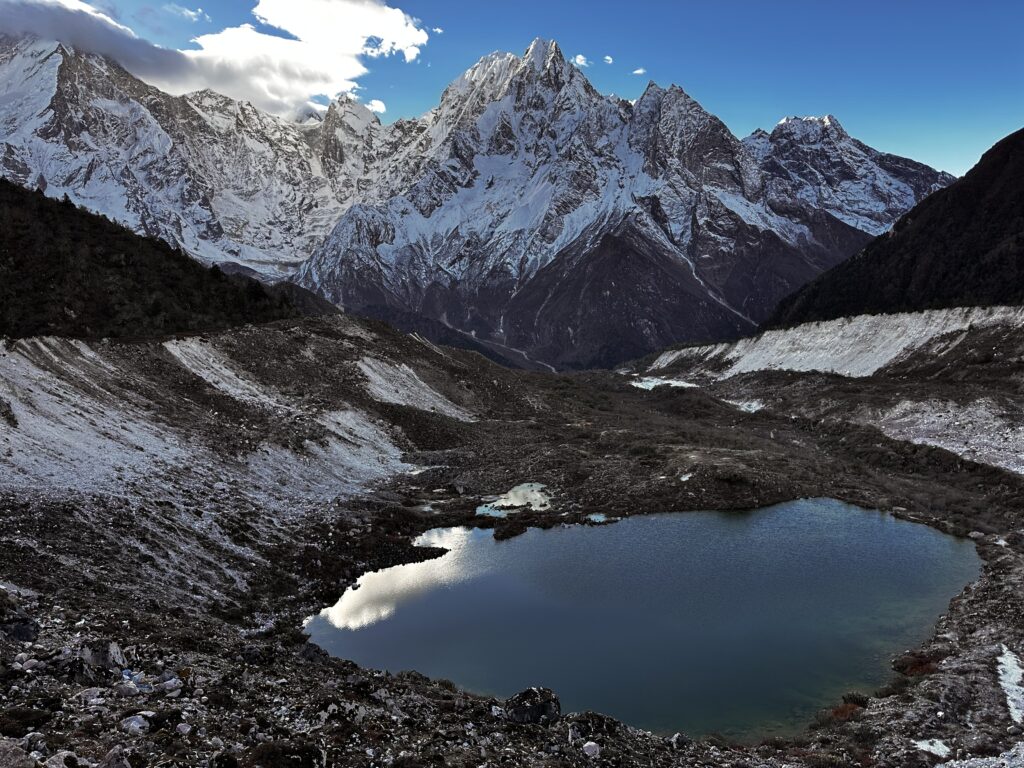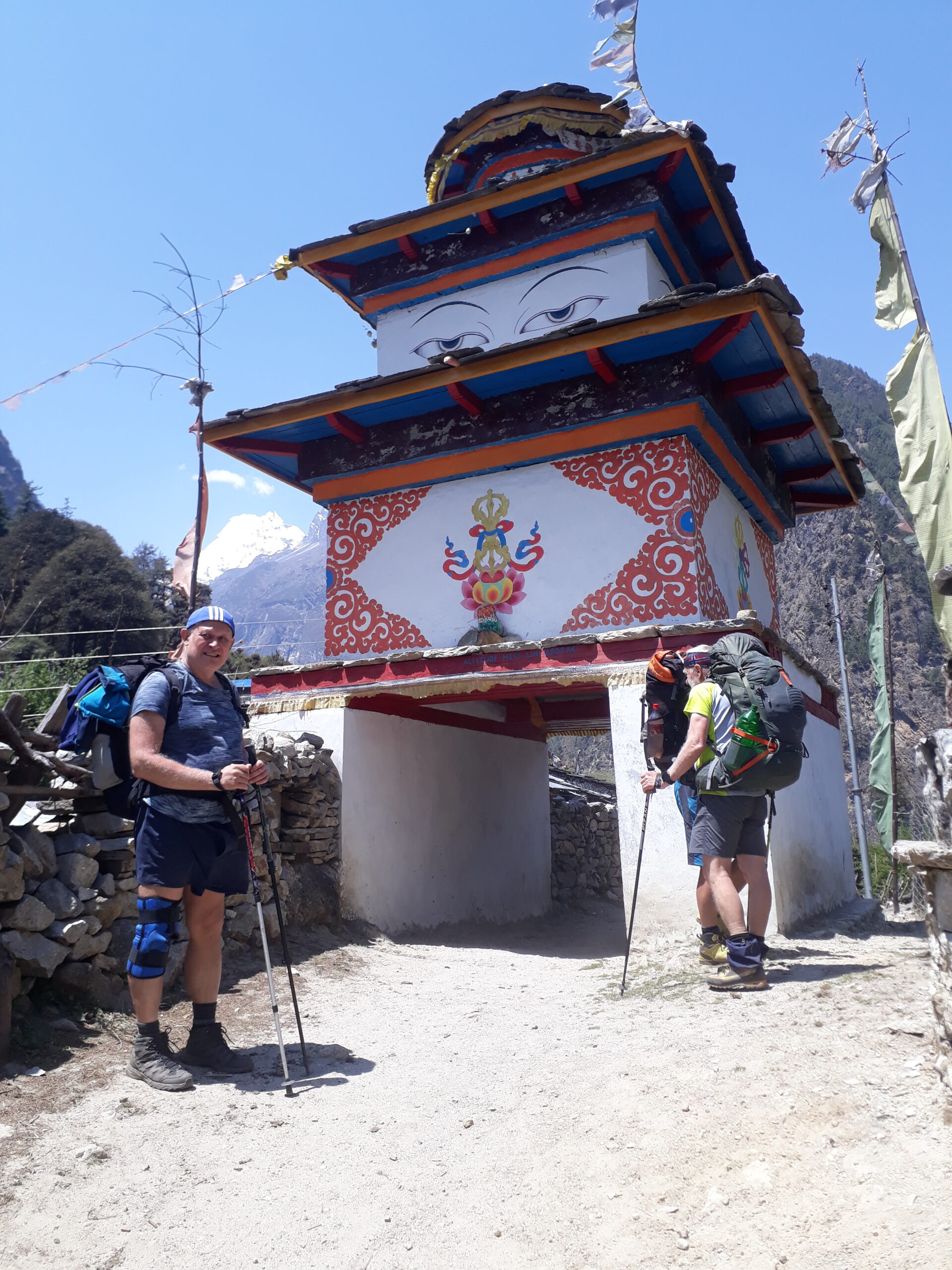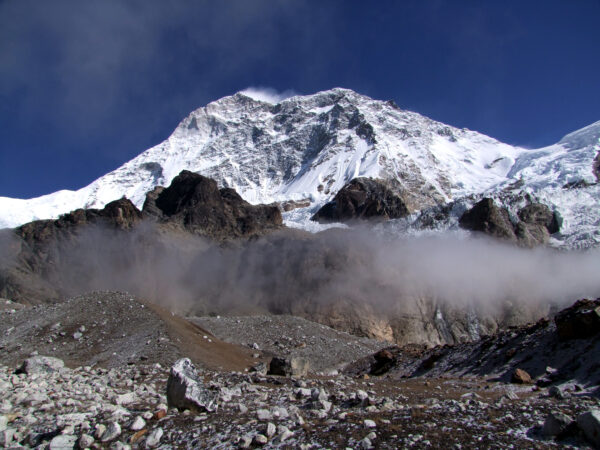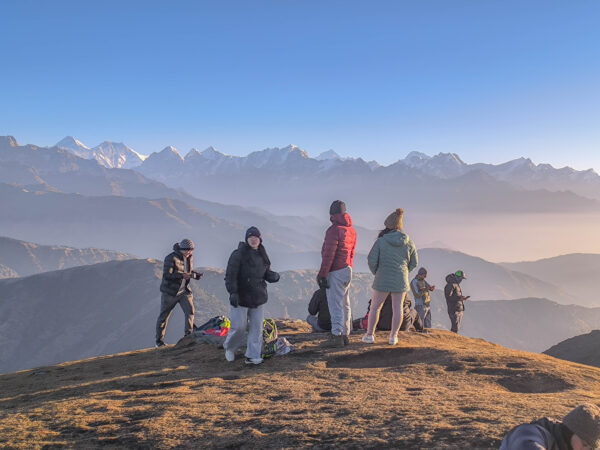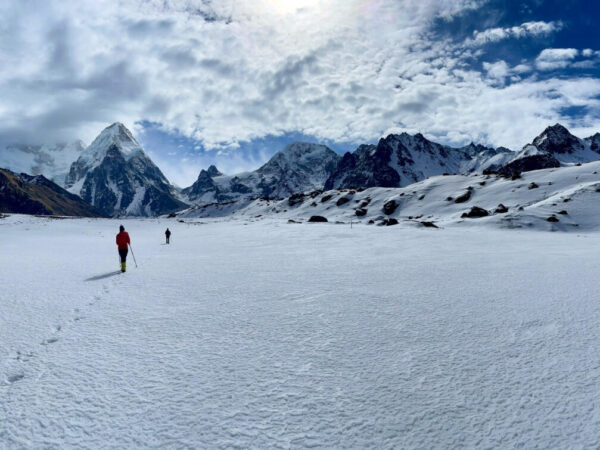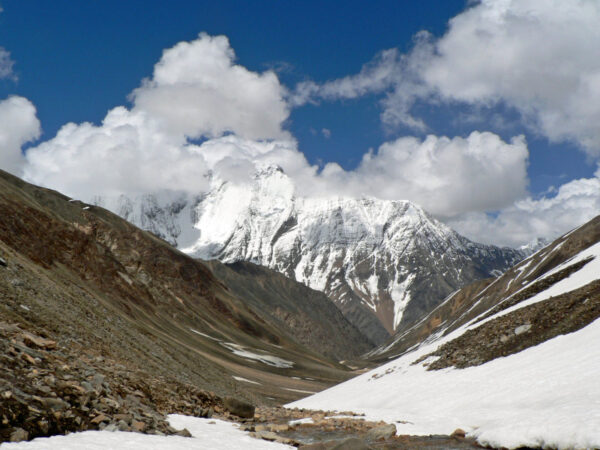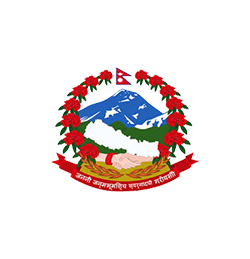Highlights
- A remote trek to the 8th highest peak in the world.
- Less crowded, pristine trekking routes.
- Insight into the cultural heritage of Gurung villages and the Tibetan Buddhist community.
- Diverse flora and fauna within the Manaslu Conservation Area.
- Exploration of the rich Budhi Gandaki River Valley.
- Stunning views of snow-capped peaks like Himalchuli (7,893m), Ngadi Chuli (7,871m), Shiringi (7,187m), Langpo (6,668m), and Saula (6,235m).
- A challenging yet rewarding experience crossing the Larkya La Pass (5,213m).
- Optional side trips to Manaslu Base Camp, Birendra Lake, and Pungyen Gompa.
Overview
The Manaslu Circuit Trek is a renowned off-the-beaten-path trekking experience in Nepal, offering a perfect blend of natural beauty, cultural richness, and adventure.
Situated in the historic Gorkha District, this trail provides a unique alternative to more mainstream routes like the Langtang Valley Trek. It gained popularity in the late 1990s and early 2000s, starting from Soti Khola and concluding in Besisahar. The trek forms a circular route, with the challenging Larkya La Pass as its highest point. Mount Manaslu, often referred to as the “Killer Mountain,” is considered one of the most difficult 8,000-meter peaks to climb.
Throughout the journey, trekkers can witness breathtaking views of numerous snow-capped peaks above 6,000 meters, including Buddha Himal, Himal Chuli, and Ganesh Himal. The trek passes through the Manaslu Conservation Area Project (MCAP), a Himalayan sanctuary dedicated to preserving diverse flora and fauna.
One of the highlights of this trek is the untouched natural beauty and the traditional way of life that remains largely unaffected by modern influences. The Manaslu Region shares a border with Tibet’s Autonomous Region of China and once served as an ancient salt trading route. Due to its cultural and geographical sensitivity, the Nepalese government has designated it as a restricted area for international visitors.
The trek itself is both challenging and rewarding, beginning at around 700 meters and reaching a maximum elevation of 5,167 meters at Larkya La Pass. The gradual ascent can be demanding for beginners, yet it adds to the thrill of the adventure.
A visit to the ancient monasteries of Tsum Valley offers a sense of tranquility. Deeply rooted in Buddhist traditions, this sacred valley follows strict religious practices, including a prohibition on animal sacrifices. Travelers who consume meat are advised to refrain from non-vegetarian dishes while in the valley, respecting its long-standing customs.
Best Seasons for Manaslu Circuit Trek
The best times to trek the Manaslu Circuit are during the spring (March to May) and autumn (September to November). These seasons offer clear, stable weather, with stunning mountain views and beautiful pastoral landscapes. Spring brings mild temperatures and vibrant blooming flowers, while autumn features crisp air and clear skies.
These seasons are perfect for trekking as the trails are dry, making for comfortable walking. In contrast, winter (December to February) can be extremely cold, with heavy snowfall, and summer (June to August) is the monsoon season, bringing rain that makes trekking more challenging. For optimal conditions, spring and autumn are the ideal times to visit.
How difficult is Manaslu Circuit Trek?
The Manaslu Circuit Trek is considered of moderate difficulty, offering a rewarding challenge for hikers looking to push their limits. With a long, continuous ascent throughout the route, it can be particularly tough for those new to trekking.
On average, you’ll walk 6 to 8 hours daily, navigating varied terrains from rocky paths to uneven trails. The trek is physically demanding, requiring both physical endurance and mental determination.
One of the biggest challenges is crossing the Larke La Pass at high altitude. The cold temperatures and low atmospheric pressure can make this section especially tough.
Proper acclimatization is crucial to avoid altitude sickness. Safe trekking requires a gradual ascent, sufficient water intake, and ample rest.
While the Manaslu Circuit Trek is not the most grueling of high-altitude routes, it still demands a solid level of physical fitness and mental readiness.
With the right preparation, steady pacing, and careful planning, most trekkers can enjoy a rewarding experience on this trek.
Accommodation in Manaslu Circuit Trek
The accommodation on the Manaslu Circuit Trek is straightforward and cozy. You’ll stay in tea houses throughout the route, each offering clean rooms with essential amenities such as a bed and blanket. Some tea houses may also offer hot showers for an additional fee.
While the rooms are simple, they provide a comfortable space to relax after a day of hiking. The meals are mostly local dishes like dal bhat, noodles, and soup. Though the facilities are basic, the warm hospitality of the local people adds a welcoming and memorable touch to the experience.
Manaslu Circuit with Tsum Valley Trekking
The Manaslu Circuit combined with the Tsum Valley Trek offers a unique experience, distinct from completing the Manaslu Circuit alone. Trekkers often choose to combine these two routes for an enriching adventure.
Tsum Valley, often referred to as a hidden gem of Nepalese tourism, has preserved its pristine nature and traditional culture, largely untouched by modern development and technology.
Nestled among the towering peaks of Buddha Himal, Himal Chuli, Ganesh Himal, and Sringi Himal, Tsum Valley is a tranquil village adorned with stone-roofed houses, terraced fields, crystal-clear Himalayan streams, lush forests, and snow-capped mountains soaring over 7,000 meters.
The Tsum Valley Trek immerses you in the heart of Tibetan Buddhist culture, within the Nepali landscape. Here, you’ll find ancient monasteries, chortens, and mani walls, contributing to a peaceful and spiritual environment.
Key Tibetan Buddhist sites like Piren Phu (also known as Milarepa’s Cave), Ruchen Nunnery, Mu Gompa, and Gumba Lungdang stand as pillars of devotion. Spending time at these monasteries offers profound tranquility and reflection.
An especially unique aspect of this sacred valley is its prohibition of animal sacrifice, adding to the region’s spiritual purity. As a result, the Manaslu Circuit with Tsum Valley Trek provides an unforgettable and deeply enriching trekking experience in Nepal.
Outline Itinerary for Manaslu Circuit Trek
Day 01: Welcome to Kathmandu (1,350m/4,429ft)
Day 02: Drive to Machhakhola (935M)
Day 03: Trek to Jagat (1,340m/4,396ft)
Day 04: Trek to Deng (1,804m/5,919ft)
Day 05: Trek to Namrung (2,660m/8,727ft)
Day 06: Trek to Lho (3,180m/10,433ft)
Day 07: Trek to Samagaun (3,530m/11,581ft)
Day 08: Acclimatization Day
Day 09: Trek to Samdo (3,690m/12,106ft)
Day 10: Trek to Dharmasala (4,470m/14,665ft)
Day 11: Trek to Bimtang (3,750m/12,303ft) via Larkya La Pass (5,160m/16,929ft)
Day 12:Trek to Tilche (1,700m/5,577ft)
Day 13: Trek to Dharapani (1,860m/6,102ft) and Drive to Kathmandu
Day 14: Final Departure
Manaslu Circuit Trek – 14 Days - Itinerary
Welcome to Kathmandu (1,350m/4,429ft)
Upon arrival, a representative from Everest Hikes will greet you at Kathmandu Airport and escort you to your hotel. After resting, you can gather any necessary trekking gear for the Manaslu Circuit trek in the Thamel area, a popular tourist hub. In the evening, your trekking guide will provide an overview of the itinerary, trek difficulty, and the various landscapes you’ll encounter along the way.
Drive to Machhakhola (935M)
Today, you’ll begin your journey to the gateway of the Manaslu Circuit trek by road. After breakfast, you’ll travel by public bus along the Prithvi Highway, heading toward Malekhui Bazar or Dumre Bazaar, a town located below Bandipur, the "Queen of Hills." Along the way, you’ll be treated to breathtaking views of the snowy peaks of the Manaslu, Ganesh Himal, and Annapurna regions. The route follows the banks of the Trishuli River and then the Marsyangdi River. After approximately eight hours of driving, you’ll reach the Budhi Gandaki Valley, where your trek will officially begin the following morning.
Trek to Jagat (1,340m/4,396ft)
Today’s trek takes you through several scenic Gurung villages in the Manaslu region. Along the way, you’ll cross a number of suspension and wooden bridges over mountain streams, including the Tharo Khola and Yura Khola. After ascending a stone staircase, you'll reach Khorlabesi Village, where you can relax by a natural hot spring waterfall and enjoy the warm waters. Continuing on, you’ll pass through more traditional Gurung settlements, each showcasing their unique architecture, lifestyle, and cultural art. Finally, you’ll arrive in Jagat, where you’ll spend the night at a local teahouse, enjoying organic, homemade food tailored to your appetite.
Trek to Deng (1,804m/5,919ft)
As you walk through lush subtropical forests, pastoral villages, and cultivated fields, you'll arrive at Deng for an overnight stay. Along the way, you'll pass through the villages of Salleri and Sirdibas before crossing the suspension bridge over the Ghatte Khola. Continuing on, you'll pass Philim, one of the largest Gurung villages on the Manaslu Circuit, and then Ekle Bhatti, known for having only one inn for travelers. The trail takes you through bamboo forests and a wide valley, leading you to Deng.
Trek to Namrung (2,660m/8,727ft)
Trekking today offers an exciting experience as you pass through dense forests, alpine vegetation, and vibrant villages rich in culture and tradition. As you continue along the trail, you'll be treated to breathtaking views of the towering peaks of the Manaslu region. You can take an alternative route to Namrung via the village of Prok, which offers stunning vistas of Siringi Himal. Along the way, you'll cross the Budhi Gandaki River multiple times via suspension bridges. This alternative trail winds through the Manaslu Conservation Area, a sanctuary for diverse wildlife and vegetation.
Trek to Lho (3,180m/10,433ft)
As you continue towards Lho village, you'll experience the traditional lifestyle and Tibetan Buddhist influence that characterize the Nubri Valley. Along with Tsum Valley, Nubri is one of the two main valleys in the Manaslu region. The valley is primarily inhabited by the Gurung ethnic group, with many people working abroad. The journey takes you through dense rhododendron and oak forests, deep valleys, and terraced fields cultivated with various crops, until you reach the mani walls of Lho village. Along the way, you’ll be treated to stunning views of the Pungen Glacier, which originates from Peak 29 in the Manaslu area. The snow-capped peaks of the Manaslu region provide a captivating backdrop throughout the trek.
Trek to Samagaun (3,530m/11,581ft)
Lho village offers a stunning sunrise view of Mt. Siringi, Mt. Ganesh, and Mt. Himalchuli. Before leaving Lho, be sure to visit the Ribung Gompa for a peaceful experience. From there, the trail takes you through Lihi, a picturesque village with monasteries and terraced fields flourishing with various crops. Continuing on, you’ll pass through three more villages—Sho, Lho, and Shyala—each offering breathtaking views of the peaks in the Manaslu region. The majestic sight of Peak 29, Himal Chuli, Mt. Manaslu, and the vast glaciers will accompany you as you move forward. Finally, you’ll reach Samagaun, a village known for its natural beauty and cultural charm, serving as a perfect resting point along the Manaslu Circuit trek.
Acclimatization Day
Samagaun is an ideal spot for an acclimatization day, offering several captivating sites that will make your trekking experience even more memorable. One great option is a side trip to Pungyen Gompa (also known as Sama Gompa), which is about a two-hour walk from Samagaun. From the monastery, you can enjoy breathtaking views of the Manaslu Glacier, the largest glacier in the entire region. As you explore the gompa, you'll encounter Sherpa women dressed in traditional attire and wearing beautiful ornaments. The chortens and mani walls, adorned with prayer flags, create a tranquil and peaceful atmosphere for both your mind and soul.
Alternatively, you can hike to Manaslu Base Camp (4,800m), where you'll be rewarded with stunning vistas of the Manaslu valley and surrounding Himalayas. Along the way, you'll pass by Birendra Lake, a freshwater lake in the Manaslu region, formed by the deposits of the Manaslu Glacier. Spanning approximately 3 square kilometers, Birendra Lake has grown in popularity among both domestic and international trekkers exploring the Manaslu Circuit.
Trek to Samdo (3,690m/12,106ft)
After breakfast, you’ll follow the trail as it ascends towards the banks of the Budhi Gandaki River, crossing a few suspension bridges and passing by mani walls. Along the way, you’ll walk through villages that reflect the deep influence of Buddhism in the Himalayas, bringing you close to the Nepal-Tibet border. This route once served as the ancient trade path between Nepal and Tibet before other routes were developed, and many traditional practices from that time are still observed today. As you continue through juniper and birch forests, you’ll reach Samdo, leaving the village of Kermo Kharka behind.
Trek to Dharmasala (4,470m/14,665ft)
After breakfast, you’ll continue your journey, passing through the seasonal Tibetan market known as Larke Bazaar. From there, you’ll ascend towards the Budhi Gandaki River, enjoying the spectacular views of the Larkya Glacier. As you cross the Salka Khola valley, you’ll reach Dharmasala after approximately four hours of walking. The next day, you’ll be tackling the highest point of the entire Manaslu Circuit trek, the Larkya La Pass at 5,160m. To help prepare for the crossing, we recommend taking side trips around Dharmasala to acclimatize and ensure you’re ready for the challenging pass ahead.
Trek to Bimtang (3,750m/12,303ft) via Larkya La Pass (5,160m/16,929ft)
Today, you’ll cross the most challenging yet unforgettable high Himalayan pass on the Manaslu Circuit trek. After breakfast, you’ll set off with determination, ready for the adventure ahead. As you walk, you’ll be treated to stunning views of snow-capped peaks, glacial lakes, remote hamlets, and a rich variety of flora and fauna. Trekking through the Larkya Glacial Valley, you’ll be rewarded with breathtaking sights of Cho Danda and Larkya Peak. Move slowly and steadily to avoid altitude sickness as you make your way to the top of Larkya La Pass (5,160m). At the summit, you’ll be greeted with unforgettable views of Himlung Himal, Cheo Himal, and Annapurna II. As you descend toward Bimtang, the early sunset will cast a beautiful glow over the towering Manaslu Mountain in the distance. After a rewarding day, you’ll enjoy a restful overnight stay at a teahouse in Bimtang, savoring delicious meals prepared by the welcoming Sherpa people.
Trek to Tilche (1,700m/5,577ft)
After breakfast at Bimtang, your trek begins with a walk along a ridge offering stunning mountain views. As you make your way, you’ll be treated to the majestic sight of snow-capped peaks, including Manaslu, Lamjung, Himlung, and Cheo, until you cross the Dudh Khola River. The trail then winds through lush rhododendron forests and the cultivated lands of Karche village. Continuing along a rugged path that alternates between uphill and downhill, you’ll reach Tilche (Tilje), where you’ll stop for the night’s rest.
Trek to Dharapani (1,860m/6,102ft) and Drive to Kathmandu
On the final day of your trek in the Manaslu Circuit, you set off after breakfast. The route takes you past Thonje village, following a stone-paved staircase to reach Dharapani. From Dharapani, you join the Annapurna Circuit Trekking trail and walk for about three hours. After a short break, you board a shared jeep to Besishar, then continue your journey to Kathmandu by regular bus service. This marks the successful completion of your Manaslu Circuit trek, offering a chance to celebrate with fellow trekkers and create lasting memories. If you prefer traveling by private jeep, please consult with your travel operator.
Final Departure
Our representative will escort you to Kathmandu International Airport for your return journey home.
Inclusions
What's included
- International airport pick-up and drop-off
- Standard hotel accommodation in Kathmandu (breakfast included)
- An experienced English-speaking guide
- All meals and teahouse accommodation during the trek
- Fresh fruits during the trek
- Kathmandu Valley sightseeing with a private jeep and tour guide (local monument entrance fees included)
- Kathmandu to Machha Khola & Dharapani to Besisahar via Kathmandu by local bus
- All required trekking permits - Restricted Area Permit, Annapurna Conservation Area and Manaslu Conservation Area entry fees
- Guide insurance, including food and accommodation
- Basic medical kit
- Sleeping bag, duffel bag, down jacket, and trekking poles (to be returned after the trek)
- Farewell dinner
- Emergency helicopter evacuation service arrangement only (must be covered by your travel insurance)
- All required paperwork and government taxes
- Everest Hikes T-shirt
What's not included
- Nepal travel visa fee
- Personal medical and travel insurance (must cover helicopter evacuation)
- Tips for guide, porter, and driver
- Personal gear and equipment
- Lunch and dinner in Kathmandu
- All other personal expenses, including beverages (both alcoholic and non-alcoholic)
- Any other items not mentioned in the inclusions

